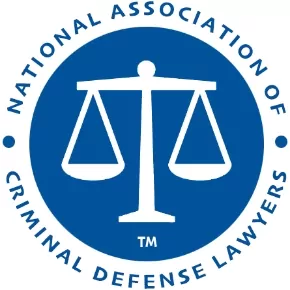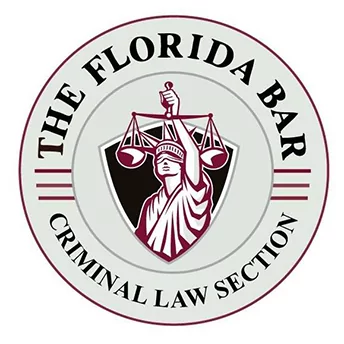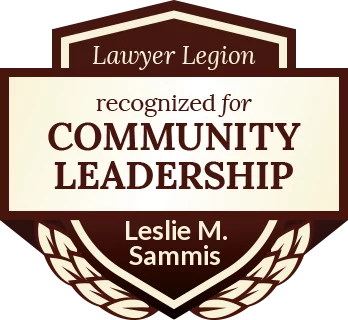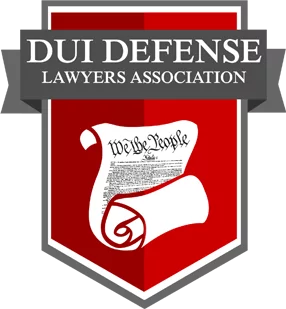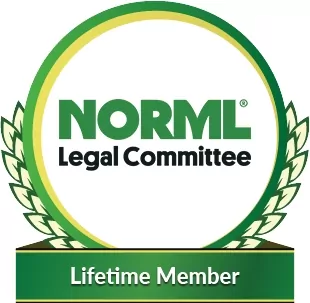Burglary with Assault or Battery
Burglary crimes involving assault or battery are classified as “violent crimes.”
Pursuant to Florida Statue § 810.02(2)(a),
“[b]urglary is a felony of the first degree, punishable by imprisonment for a term of years not exceeding life imprisonment …, if, in the course of committing the offense, the offender … [m]akes an assault or battery upon any person.”
In these cases, if the jury finds the defendant guilty of burglary, it must also determine if the State has proved beyond a reasonable doubt whether, in the course of committing the burglary, the defendant either:
- assaulted any person by using an intentional and unlawful threat, either by word or act, to do violence to another, at a time when the defendant appeared to have the ability to carry out the threat and his or her act created a well-founded fear in the other person that the violence was about to take place; or
- battered any person by actual and intentional touching or striking of another person against that person’s will or the intentional causing of bodily harm to another person.
Burglary with assault or battery is classified as a Level 8 offense for purposes of the criminal punishment code.
Attorney for Burglary with Assault or Battery in Tampa, FL
If you are charged with burglary of a structure, conveyance, or dwelling (either occupied or unoccupied) with assault or battery, or smash and grab burglary, then contact an experienced criminal defense attorney at Sammis Law Firm.
We help clients charged with the most serious violent crimes under Florida law, including burglary charged as a first degree felony punishable by life in prison.
Contact us for a free consultation to discuss the charges pending against you, the potential penalties that might apply, and the best defenses to aggressively fight the charges.
With offices in downtown Tampa and New Port Richey, our attorneys fight burglary charges prosecuted in the greater Tampa Bay area.
After an arrest for a violent crime, we fight charges being prosecuted in Tampa in Hillsborough County, Brooksville in Hernando County, New Port Richey or Dade City in Pasco County, Clearwater in Pinellas County, in Bartow in Polk County, FL.
Call 813-250-0500.
Element of Burglary with Assault or Battery under § 810.02(2)(a)
For charges of burglary with an assault or battery under Florida Statue § 810.02(2)(a), the prosecutor with the State Attorney’s Office must prove the following elements beyond all reasonable doubt:
- The defendant entered a structure or conveyance owned by or in the possession of the alleged victim.
- At the time of entering the structure or conveyance, the defendant had the intent to commit either:
- the crime alleged; or
- an offense other than burglary or trespass in that structure or conveyance.
- In the course of the burglary, the defendant either:
- committed an assault; or
- committed a battery.
When the compounded offense of burglary with an assault or burglary with a battery is charged, the jury can convict on two lesser-included offenses. See Gian-Grasso v. State, 899 So. 2d 392 (Fla. 4th DCA 2005).
The jury instructions for burglary were adopted in 1981 and amended in 1985 [477 So.2d 985], 1997 [697 So.2d 84], 2003 [850 So.2d 1272], 2007 [962 So. 2d 310], 2008 [986 So. 2d 563], 2013 [109 So. 3d 721], 2015 [176 So. 3d 938], and 2017.
Affirmative Defenses to Burglary with Assault or Battery in § 810.02(2)(a)
An affirmative defense might exist if the defendant meets his or her burden of production that he or she had an invitation or license to enter, or that the premises were open to the public. State v. Hicks, 421 So. 2d 510 (Fla. 1982) and State v. Waters, 436 So. 2d 66 (Fla. 1983).
The failure to instruct on consent constitutes a fundamental error where consent is the sole or primary defense. Faulk v. State, 222 So. 3d 621 (Fla. 1st DCA 2017) and Harrison v. State, 229 So. 3d 830 (Fla. 4th DCA 2017).
When the defense applies, the jury is instructed as follows:
It is a defense to the crime of Burglary if [(defendant) was [licensed] [or] [invited] to enter the [structure] [conveyance]] [the premises were open to the public at the time of the entering].
The State has the burden of proving beyond a reasonable doubt that [(defendant) was not [licensed] [or] [invited] to enter the [structure] [conveyance]] [the premises were not open to the public at the time of the entering].
When a defense related to consent is at issue, the prosecutor might request the following instructions:
If the [license] [invitation] to enter was obtained by (defendant’s) trick or fraud or deceit, then the [license] [invitation] to enter was not valid.
If (defendant) entered premises that were open to the public, but then entered an area of the premises that [he] [she] knew or should have known was not open to the public, (defendant) committed a burglary if [he] [she] entered that non-public area with the intent to commit [(the crime alleged)] [an offense other than burglary or trespass] in that non-public area.
Burglary after Remaining with Intent to Commit an Offense
Suppose the information or indictment charges remain with the intent to commit an offense.
In that case, the jury will be instructed to prove the crime of Burglary, the State must prove the following two elements beyond a reasonable doubt:
- (Defendant) had permission or consent to enter a [structure] [conveyance] owned by or in the possession of (person alleged).
- (Defendant), after entering the [structure] [conveyance], remained therein:
- surreptitiously and with the intent to commit [(the crime alleged)] [an offense other than burglary or trespass] inside the [structure] [conveyance];
- after permission to remain had been withdrawn and with the intent to commit [(the crime alleged)] [an offense other than burglary or trespass] inside the [structure] [conveyance]; or
- with the intent to commit or attempt to commit a [forcible felony listed in § 776.08 Fla. Stat.] [(the forcible felony alleged)] inside the [structure] [conveyance].
Under Florida law, to be considered burglary, the entry necessary need not be the whole body of the defendant.
Instead, sufficient evidence might exist if it is proven that the defendant, with the intent to commit a crime, extends any part of his or her body into the structure or conveyance.
Prosecutors often have a difficult time proving the defendant’s intent since it is an “operation of the mind” and not always capable of direct and positive proof.
The prosecutor is permitted, however, to establish intent through circumstantial evidence.
To make it easier for the prosecutor, the court might instruct the jury that it “may infer” that the defendant had the intent to commit a crime inside the structure or conveyance if the entering “was done stealthily and without the consent of the owner or occupant.”
Even though an unlawful entering or remaining in a structure or conveyance is proved, if the evidence does not establish that it was done with the intent to commit the crime alleged or an offense other than burglary or trespass, then the defendant must be found not guilty of burglary.
Lesser Included Offenses for Burglary with Assault or Battery
Depending on how the charge of burglary with a battery or assault is charged, only burglary under 810.02(3) or 810.02(4) is considered to be a category one lesser included.
Crimes for burglary might involve the entry of a location that can be secured with the intent to steal property.
Crimes for burglary can involve a structure or the enclosure around the structure or a conveyance such as a motor vehicle.
The following offenses can be considered category two lesser included offenses:
- Aggravated battery under 784.045
- Battery under 784.03
- Aggravated assault under 784.021
- Assault under 784.011
- Burglary under 810.02(3)
- Trespass under 810.08(2)(a), (b), or (c)
- Criminal mischief under 806.13
- Persons Engaged in Criminal Offense Having Weapon under 790.07(1)
- Persons Engaged in Criminal Offense Having Firearm under 790.07(2)
The courts have found that it is probably best for the jury to make special findings regarding enhancements instead of listing all of the necessary lesser-included offenses of the highest form of Burglary charged. See Justice Pariente’s concurring opinion in Sanders v. State, 944 So. 2d 203 (Fla. 2006).
Definitions for Florida’s Burglary Statute
The burglary statute uses the term “structure” or “conveyance.” Under § 810.011(3), Fla. Stat., the term “conveyance” is defined to mean any motor vehicle, ship, vessel, railroad vehicle or car, trailer, aircraft or sleeping car; and to enter a conveyance includes taking apart any portion of the conveyance.
Under § 810.011(1), Fla. Stat., the term “structure” is defined to mean “any building of any kind, either temporary or permanent, that has a roof over it, and the enclosed space of ground and outbuildings immediately surrounding that structure.
For purposes of defining a structure in Florida’s burglary statute, the enclosure need not be continuous as it may have an ungated opening for entering and exiting.” See Dubose v. State, 210 So. 3d 641 (Fla. 2017).
Statistics on Burglaries in Hillsborough County, FL
According to the Hillsborough County Sheriff’s Office 2018 Fact Book, in 2017, 2,496 burglaries were reported, a 66.7% decrease from 2008 when 7,505 burglaries were reported.
The Crime in Florida Report Abstract shows that in 2017, there were 88,778 UCR burglary offenses reported in Florida.
The recent study shows a total of 16,463 arrests for burglary were reported to the Florida UCR program, including 4,059 juvenile arrests and 12,404 adult arrests.
Additional Resources
Burglary Crime Data from FDLE – Visit the Florida Department of Law Enforcement website to find information on burglary, including the UCR Definition. The Florida Uniform Crime Reports program defines burglary as “the unlawful entry of a structure to commit a felony or a theft.” Crimes involving attempted forcible entry and “smash and grab” crimes are also included. For purposes of the UCR definition, crimes for burglary from a conveyance or within the curtilage are counted as larceny.
This article was last updated on Monday, May 1, 2023.






